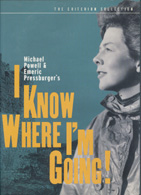

Importance of Geography: and Political Structure
Not so much documentary but serves several functions:
Links film world with real (Powell not interested in fantasy without it having a link to reality).
Establishes mood (Powell fond of Western Isles) (Scots were upset that the film makers had bad weather, but that was what they were looking for!
Political Structure
:

Great Britain=England, Scotland and Wales
United Kingdom= Great Britain + Northern Ireland
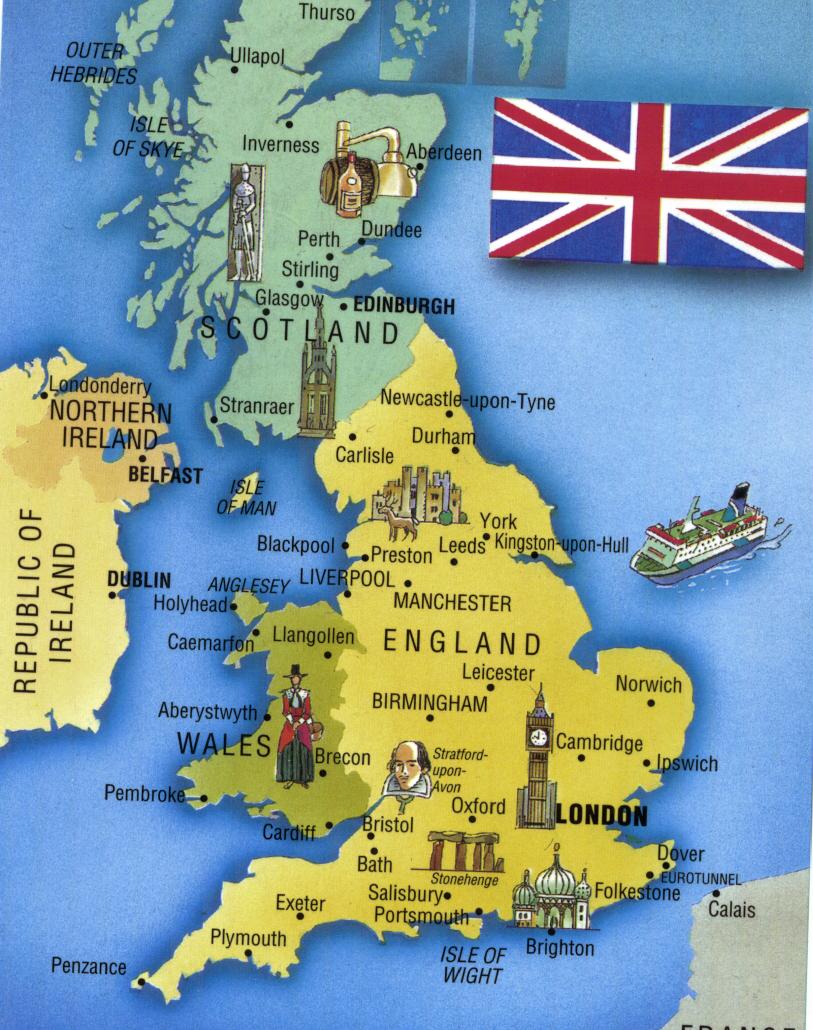
British Islands = United Kingdom + Isle of Man + Channel Island (Jersey and Guernsey)
British Isles = British Islands + Ireland

It is important to realize that there are four major divisions in what is known as the United Kingdom– England to the South, Wales to the West, Scotland to the North and Northern Ireland on an altogether different “island” called Ireland. Great Britain technically refers to all but Northern Ireland. So, listed by population one would say:
United Kingdom= England, Scotland, Wales and Northern Ireland
Great Britain = England, Scotland and Wales
Technically it is correct to call people from England, Scotland and Wales as British, but it is incorrect (to say nothing of unwise) to refer to the Scots, Welsh or Northern Irish as being English. It is a common error among Americans to think that English and British are synonymous, or that Great Britain and the United Kingdom are synonymous.
The boundary between England and Scotland had long been fought over with a section of land in Scotland known as “The Borders” being claimed by both England and Scotland. Now definitively a part of Scotland it marks the area into which people traveling from England to Scotland first arrive. It is the part of Scotland known as “The Lowlands” as opposed to “The Highlands”. The lowlands are generally marked by low rolling hills, while the Highlands are more mountainous. Although there is no “official line” to mark the boundary, a dividing line used is one that follows a geological fault known as The Highland Boundary Fault. It starts at the coast northwest of Glasgow and goes in an easterly direction north of Stirling and Dundee then going North to a point somewhat to the East of Inverness which is generally seen as the Capital of the Highlands. Inverness (The mouth of the Ness River sits at the end of Loch Ness).

The Gaelic speakers refer the highlands as “The place of the Gaels” The Highlands are often spoken of with “The Islands” which refers to the numerous islands to the west and north of the Scottish mainland. To the north are Shetland and Orkney (almost always insets on maps of Scotland) and the Hebrides (inner and outer) often referred to as “The Western Isles” The island of Foula (in the Shetland group) was used for St. Kilda in the outer Hebrides in Michael Powel’s Edge of the World. These islands were in heavy contact with the Norse and the dialects spoken here have the “Norwegian lilt” and there are still Viking Festivals here.
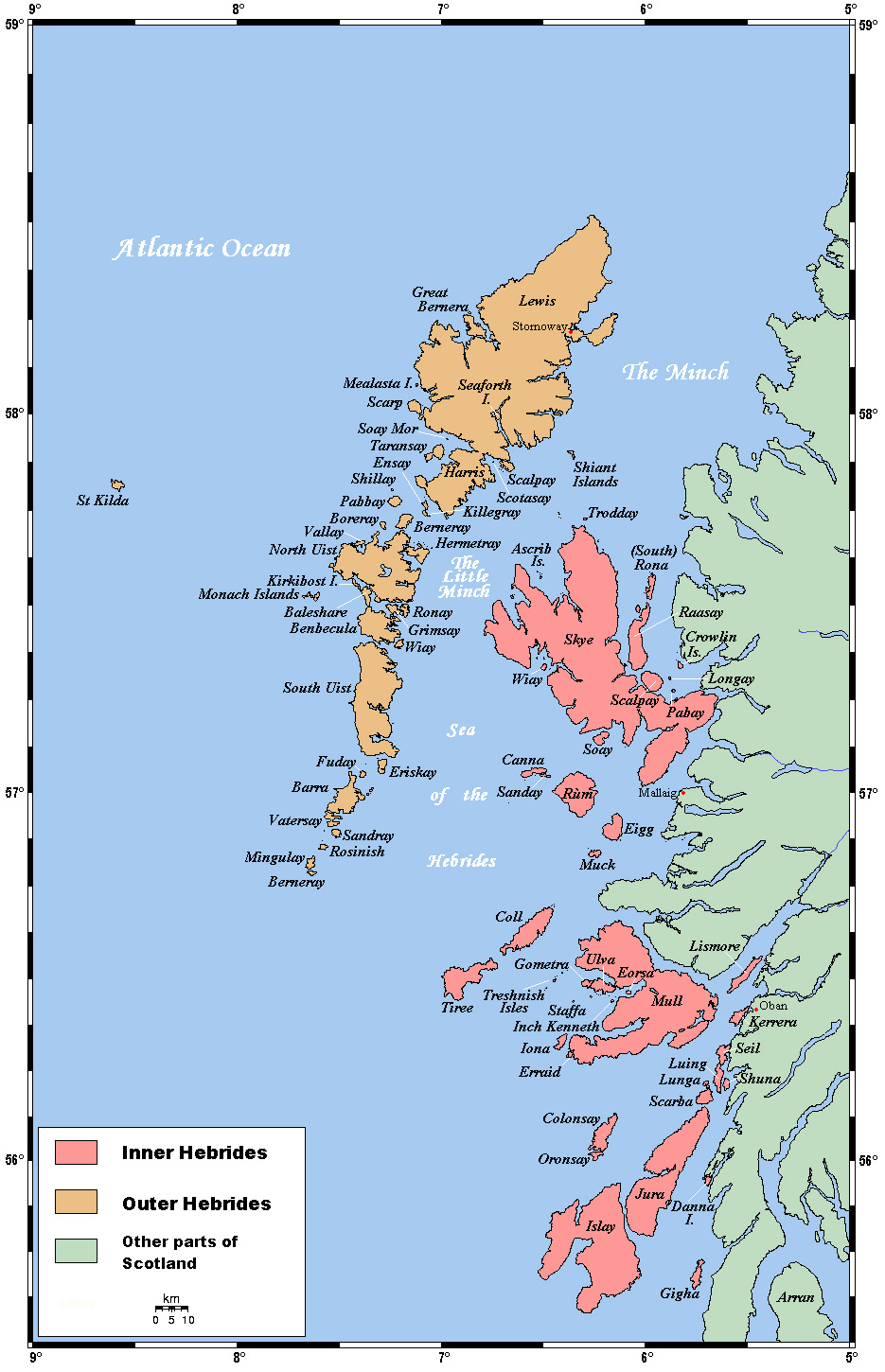
The Hebrides off the west coast are divided into “inner and outer Hebrides”
Lewis Harris and Uist are some of the more well-known Outer Hebrides (along with St. Kilda known from Edge of the World), while Skye, Mull, Iona, Islay, Staffa, Jura and Scarba are inner Hebridies. Staffa is known for its huge cave known as “Fingal’s Cave” and is the subject matter of Mendelsohn’s famous piece “Fingal’s Cave” Jura is where George Orwell lived when he wrote 1984.

The town of Tobermory is on the island of Mull.
There are strong dangerous tides among these islands and the Corryvercken tide race creates one of the world’s largest whirlpools between Scarba and Jura known simply as Corryvrecken. Orwell was on a small boat and misread the tide table and was nearly drowned there.
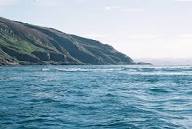
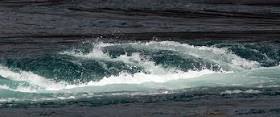
There are cultural differences between the Highlands and lowlands
It is in the lowlands that the dialect of English known as Scots developed. This is the dialect that appears in a stage form when most actors attempt Scottish accents. It has a good deal of variation in it by geographical location. Some dialects pronounce “wh” as “f” and others make subtle distinction in pronunciations of words like “tide” and “tied” or “side” and “sighed”.
Gaelic tends to be better preserved as a first language in the Highlands and the Islands.
THE WAR
By the time the film was released the Normandy Invasion has happened and the war was pretty much over. The impact of the war on the people in the British Isles was severe. There were many bombings in major cities and in small towns as well, the blackouts were everywhere; soldiers had been billeted all over (as is mentioned in this film) and there were troop movements which separated people from their areas as well as an influx of Americans into the country which led to a kind off “culture shock”
The war had an enormous impact on social movements. Women had been called to replace men in all jobs since the men had gone into the army. When the war ended there was a kind of idea that everything would go back to the way it was, but of course it didn’t. (How you going to keep them down on the farm after they’ve seen Paree).
Since the government had more or less promised a return to normality after the war, and put up all the things Britain was fighting for, it became quickly obvious that wasn’t going to happen so there was a heavy push to socialism which ushered in the Labor Party and a shift away from “material” things which just couldn’t be gotten. Remember the mills shifting away from khaki to colors again.
There was also a growing feeling that some people had become profiteers and made a fortune off the war while those who were off actually fighting were not doing well financially. So a move to “redistribute the wealth” through many programs and much higher taxes (to the point that people were turning down promotions because the increase in salary would put them in a higher income bracket which meant a higher tax rate and a lower take home pay than they had at the lower position! So the leftist government tried to wean them away from materialism, a position endorsed by Powell and Pressburger and so in both this film and A Canterbury Tale the films lean away from materialism into something mystical and/or magical. The important things in the Canterbury Tale are the personal relationships and the experiences which are real (not films) but Bob finds his girlfriend has not left him; Gibbs gets to play the organ for free (no complaint from the union) and Alison gets her “deceased” boyfriend back.
I KNOW WHERE I’M GOING
1945
Good film makers usually have a philosophy of life which appears in their writing and film making. Part of the work here is to discuss how this manifests itself in the films.
This film is often paired with A Canterbury Tale as Powell and Pressburger’s “pastorale films”. Both deal with areas which are not urbanized and represent a “countryside” image of Britain, in this case however we are no longer in England near Powell’s birthplace, but rather in Scotland for most of the film.
A good deal of Scottish history involves battles with the English which have produced a number fo famous Scots like Robert the Bruce, William Wallace of Braveheart fame, Rob Roy so it is not without surprise that there is still some hostility at various levels between the two The film Braveheart caused riots in Scotland and is a bit of the “devolution” process in which Scotland is separating from Great Britain or maybe the UK.
There are several terms associated with Scotland and Scottish literature (and to some degree film). An early tradition is called “Tartanry” and is basically a depiction of a historical Scotland in such a way as to overemphasize certain aspects of Scottishness (especially based on the highland culture) such as clan tartans, bagpipes, kilts and Scottish Gaelic . Aside from “clan tartans, all of which are real and play a part in Scottish life but not as depicted. (It would be like depicting all Americans running around in chaps and ten gallon hats and going to baseball and football games.The depiction is usually something “kitsch” and was more the development of an emergent tourist industry in Scotland.
In fiction the stories generally focus on historical figures turned into fictional heroes or the romanticization of various things.
It is in this tradition one finds the Rob Roy stories and the like and in its ultimate Hollywood expression Brigadoon (which filmed in the US because no one could find anywhere in Scotland that looked Scottish enough!).
Another of these is “kailyard” or “cabbage patch”
of a school of writers: characterized by sentimental description of Scottish life and considerable use of Scots dialect
The Kailyard school (kailyard means “cabbage patch”) reacted against negative depictions of Scottish life. It objected to showing deficiencies or weakness in the everyday life. The kailyard approach is seen as being overly sentimental and interested in rural life, not urban. All any any problems are removed from their depictions of a “quaint people in quaint towns often doing quaint things”
is a school of Scottish fiction. It appears in the 1890s as a reaction against what was seen as a negative depiction of Scottish life which showed its weak spots The Kailyard writers are seen as producing an overly sentimental representation of rural life, cleansed of real problems and issues that affected the people. There are “quaint people in quaint towns often doing quaint things”” Its name derives from the Scots"kailyaird" or "kailyard", which means a small cabbage patch (see kale) or kitchen garden, usually adjacent to a cottage.[1] The name derived from Ian Maclaren's 1894 book Beside the Bonnie Brier Bush whose title alludes to the Jacobite song "There grows a bonnie brier bush in our Kailyard".
Writers of the Kailyard school included J. M. Barrie (Peter Pan), Ian Maclaren, J. J. Bell, George MacDonald, Gabriel Setoun and S. R. Crockett.
See Barrie’s The Little Minister and A Windom in Thrums as examples
By the 1940’s there is a reaction to the kailyard tradition, which becomes known as “The Scottish Renaissance” It tends to focus neither on old history or quaint villages, but on Scottish interactions with outsiders (often the English or American tourists or visitors). Typical films in vein are films like Ealing studio’s Whisky Galore (1949), The Maggie (1954) and most recently Local Hero. In general he Scots best the outsiders and bring about a change in them
Following this come the more recent films which deal with social issues in Scotland with films like Bill Douglas’ trilogy My Childhood (1972), My Ain Folk (1973) and My Way Home (1974) and the more recent Shallow Grave (1994), Trainspotting (1996), Ratcatcher (1999), My Name is Joe (1999)
Even in these, there can be detected without much effort anti-English feelings. When one of the characters in Trainspotting laments “We couldn’t even get ourselves colonized by a descent country” (i.e. England) the rift between the English and the Scots is perfectly apparent and demonstrably Scottish in the film.
Another word which turns up in this context is “twee” which is something akin to “kitch” There are many questions among writers as what are the “acceptable” images for Scotland. – kilts, bagpipes, highland dancing etc.
I Know Where I’m Going! Is sometimes seen as falling into either the tartanry or reactionary school of writing, none the less is it very much liked by many Scots, and is certainly not in a class with Brigadoon which is generally seen as a form of insanity. In some ways it is in a class by itself, although it approaches 1940’s Scotland much the way the more recent films do, noticing actual problems and showing a more realistic way of life of the people in the Western Isles
Powell’s interest in geography manifests itself here again
Real locations are used (most of the filming was in Scotland) The film is set largely in Tobermory on the island of Mull, Kiloran (probably meant to be the island of Colonsay) takes its name from a bay on that island). But the fiming is done in such a way to make the Scottish landscape rather mystical and atmospheric (The Scots apologized for the bad weather, and Powell kept insisting it was exactly what he wanted!)
Moy Castle is a 15th Century badly damaged MacLean castle also found near Lochbuie on Mull
The whirlpool known as Coryvreckan, the third largest in Europe, figures in the story as well and is located off Mull between h islands of Jura and Scarba
Scotland like all of the Celtic fringe (as it is sometimes known), is seen as having some sort of “supernatural” connection. There are the “little people”, second sight and of course the holiday known is Scotland (and other Gaelic speaking cultures as Samhain is what gives rise to Halloween.
Watch for appearances of references to supernatural or superstitions in the film.
Roger Livesay was recruited for the male lead and Wendy Hiller who missed out on Col Blimp was given the female lead. Livesay was unfortunately in a successful play in London and was unable to go to Scotland to film the locations shots, so they had a double who studied Livesay’s walk and body language. Powell said he can no longer tell which s the real Livesay! He felt this was the kind of “movie magic” he was talking about in its ability to trick the audience.
A number of the gang show up again including Pamela Brown as Catriona.
Erwin Hiller (photographer) (Silver Fleet, Canterbury Tale)
Alfred Junge, production designer etc. Blackout, Silver Fleet, Volunteer, Colonel Blimp, Canterbury Tale, Stairway to Heaven, Black Narcissus
Alan Gray (composer) Silver Fleet, Life and Death of Colonel Blimp, Volunteer, Canterbury Tale, Stairway to Heaven
John Seaborn (editor) Blackout, Blimp, Volunteer, Canterbury …one of our aircraft is missing
Note the appearance of Petula Clark as the young girl
The English who are in the isles are depicted similarly. They are the only people worth knowing. Bellinger says so to Joan. They are interested in themselves and what they do.
Compare Mrs. Crozier at Aschencreuch with Robinsons
A number of themes appear as well, here the separation of Kurwille and Wesenwille associated with Gesellschaft and Gemeinschaft is significant:
Rational
non rational
Watch how these are used in the film
MUSIC
As usual music is important. The film’s title is based in a song “I Know Where I’m Going” which is heard in the film.
Pipers are important in the film as is the céilidh a tradition social gathering at which there is generally music and dancing.
LANGUAGE
The use of Gaelic in the film.
AFTER THE FILMS:
Opening is odd again. Starts with little kid “knowing where she is going right from the start”
Organization of the Characters:
English nobility is boring, rude and insufferable. (Robinsons, Bellinger)
Scottish is more pleasant (Kiloran, Crozier)
Websters are not nobility. Joan’s childhood is clearly lower that Catriona’s.
Cheril (Pet Clark) Quiz kid – sees through Joan immediately. Thoroughly upper class – already plays bridge well.
Bridge is not something Joan plays (on suspects Torquil does but doesn’t admit to). Joan is worrying about how she will like or fit into this class. When Mrs. Crozier describes the ceilidh, Joan loves it. Mrs. Robinson says fine but wants to play bridge (go to the ceilidh after bridge) . Bridge and ceilidh linked as opposites.
Mrs. Robinson’s driver surprises her by indicating he has a social life. Servants aren’t supposed to.
LANDSCAPE AND GEOGRAPHY
Most of film shot on location on Mull. Location shooting dissuaded James Mason from taking the lead male role. Interestingly enough Livesey couldn’t go so Mason could have been used.
Scottish landscape with its “inclement weather” about which there are several jokes was perfect. Fog covered landscape also perfect. Much of nature appears in the film.
Whirlpool Corryvreckan quite famous and nice metaphor for Joan’s dilemmas.
Real castle (has no curse)
Georgraphy not for documentary purposes. It is in fact incorrect – one would not go from Tobermory to Colonsay and pass Corryvreckan for example. There are in fact spoofs of documentaries in the film, most notably the most famous British one “Night Mail” by Harry Watt and Basil Wright with text by Pulitzer Prize winning writer W.H. Auden (Age of Anxiety) and music by Brittain’s famous composer Benjamin Britten
The themes images and motifs
Journeys and border crossings:
Visuals are time tables, tickets, instructions for travel (rational things for journeys. Time table blows away, journey not so organizaed now by people but by unpredictable natural forces.
Two journeys (one from Manchester to Tobermory, one from Tobermory to Kiloran).
NATURAL AND SUPERNATURAL
Nature conspires against Joan – first the fog, then the wind, then Corryvreckan.
Supernatural elements clearly on the side of Gemeinschaft (Wesenwille)
Supernatural:
Catriona the huntess (country, people take care of themselves etc.
At Catriona’s Joan gets to count the beams in the ceiling in order to make a wish come true. She comments on the fact that new buildings fon’t have beams. When she gets to the hotel, the shot reveals there are no beams in the ceiling.
The curse and its double meaning
The legend of Corryvreckan and its re-enactment as Joan, Kiloran and Kenny try to get to the island and are stopped by natural forces – the storm which kills the engine, the whirlpool
Note journeys as movement into the mystical (pilgrimage to Canterbury – trip to Killoran) First trip in film is to money; second is anti materialistic
Materialism vs anti (money to lure the youngster to going to Kiloran in the boat (Gives up materialism for love)
Materialism evident from the start
Joan is about status as defined by money. In the introduction we learn:
MUSIC
The song “I know where I’m going”
The gathering (céilidh) at which the headiness of the event starts Joan’s descent into love.
The pipers
Mouth music (range of Scottish folk song types and a dances)
The importance of the Ceilidh in the life of the islanders. Socializing and social life among all classes. Respect of the “nobility” of this. (Kiloran shows up – an honor)
Notice the way the film transitions from Mrs. Crozier’s recollections of the gatherings at Oban. As she recants her memories of those events, the music of ceilidh begins quietly ni the background almost as a part of her memory and then as the shots changes to the actual ceilidh, the music become that of the avtual event and not in Mrs. Crozier’s mind.
FILM TECHNIQUES
Use of sky and composition in frames
Doors as crossing overs (Catriona appears in door => mystical entrance of Diana) Catriona’s supernatural connections tie her to a kind of witchcraft. He name is the same as the woman who wrote the curse and it is Catriona’s statement to Torquil “She’s running away from you” that makes Torquil realize that his growing attachment to Joan is in fact returned.
Compare the images of the dogs in Catriona’s house with those at Sorne Castle. What can you make of that? In fact think about animals in general in the film.
Joan in door at Moy Castle (equates as opposite of Catriona – Catriona comes home, Joan is outsider to castle but will be coming home.)
Torquil ultimately linked with both when he enters My castle.
Complex special effects for the day in Corryvreckan and in use of double for Livesey (Powell said it was his best work – no one noticed)
Internal state manifest on screen: dream sequence (marrying machine) Sir Robert Bellinger (fiancé) is never seen The return of the ceilidh in Joan’s mind
Equation of father with Bellinger (40’s films big on psychoanalytical approaches) No mother – father taught her to dance she calls him darling. The use of the father as the priest in the marriage – he is “marrying” his daughter
Contrasts in the greetings between Robinsons and Crozier (A pastoral staff of staff of office Christianity’s use may have uts origin in shepherd’s crook as shepherding and sheep a major metaphors in Christianity as a religion developing in an area with many sheep.
Part of the film is set at Corryvreckan. They filmed in Corryvreckan and the nearby (but less fierce) waters at Bealach a’ Choin Ghlais ("the pass of the grey dog"). The footage obtained there was then used in back projections with the actors in a replica boat rocked on gimbals while buckets of water were thrown at them. Model shots of the whirlpool were made to give a medium view of the boat being drawn into Corryvreckan.
Note the use of the birds again as in A Canterbury Tale. Once again there is a falconer. The eagle is equated Torquil and is in fact named for him. Taming of the hunting bird is seen as easier than taming a woman.
Although the film is clearly anti-materialistic (Joan gives up her drive for social position as defined by money, there are clearly evidences of a psycho-sexual subtext in part of the film. At the start of the film it is unclear who the older man is she is talking to about her money. He is her financial advisor but also turns out to be her father (no mention of a mother) She calls him “darling” wants to dance with him and says he taught her how to dance. The father himself point out that Bellinger is close to his age and in this sense Joan is marrying a father figure or substitute, something that needs to be resolved before a real marriage can take place. In her dream sequence her father “marries” to Consolidated Chemical Industries which is shown in negative films indicating that industry is “negative” in some ways.
Kurwille
Logical
Planned
Orderly
Urban
Manufactured
Easly deciphered
(schedules)
(time tables)
(structured codes like Morse or semaphore)
Wesenwille
non logical
spontaneous
random
rural
crafted
diffuse
Similarly 2 love stories - Bridie and Kenny; Joan and Torquil which ultimately meet up and collide